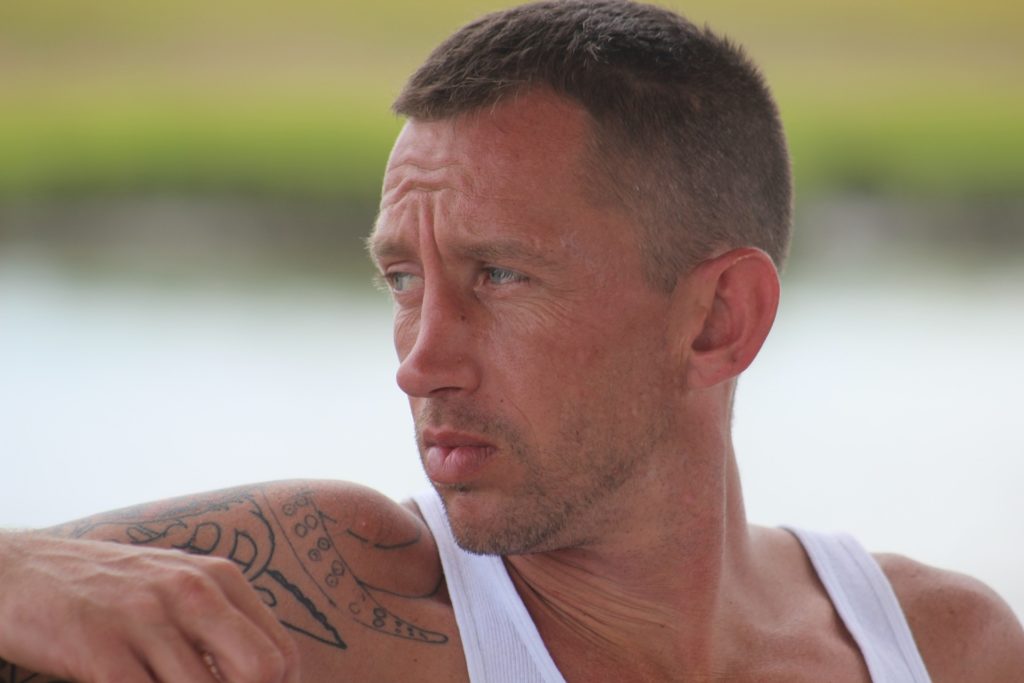
The military culture can sometimes be characterized by rampant drinking, excessive prescription medication abuse and a “don’t ask don’t tell” approach when it comes to addiction.
Wartime saw many doctors and medics desperate to treat soldiers for pain from combat injuries and prescription opiates were the easiest and quickest way to do so. This ended up creating a new problem in addition to chronic pain: addiction to prescription medication.
As it turns out, the American military is prescribed three times the amount of narcotic painkillers as compared to that for civilians. In 2014, the Department of Veterans Affairs treated about 650,000 veterans through opiates.
2011, the Journal of Pain and Symptom Management (JPSM) reported that 16.3 percent of veterans shared prescriptions to manage their pain, and 29 percent of veterans resorted to alcohol or street drugs to treat pain. Thirty-five percent of veterans used a combination of both. These dangerous practices increase the chances of an overdose. [1]
Injury in Veterans
The majority of people often misperceive combat injuries to be largely gunshot wounds and burns from bomb explosions. Despite the frequent occurrence of such injuries, the most common type of combat injury is musculoskeletal.
Musculoskeletal injuries are movement injuries, such as strains and dislocations. These injuries are not just limited to the combat zone but can occur in the field or during training as well. Excessive exertion strains from sitting in a tank or jet for too long or muscular tension from carrying weapons can all result in chronic pain.
Musculoskeletal injuries constitute 77 percent of war wounds. As a result, abuse of prescription drugs is higher among veterans than civilians, and the rate drastically escalated throughout the wars in Iraq and Afghanistan.
"It's a national problem," said Dr. Gavin West, head of the Opioid Safety Initiative at the Department of Veterans Affairs. West explained that combat veterans have more pain to deal with than most civilians.
"We have a very large number of people coming home," West further elaborated. "We have people coming back that maybe in the past would not have survived these injuries, that have really significant pain syndromes from their injuries sustained on the battlefield." [2]
Chronic Pain and Addiction
More than half of male VA patients in primary care report chronic pain. The prevalence may be even higher in female veterans. As a result, the use of long-term opioid therapy for patients with chronic pain continues to increase. Non-specialists now prescribe opioid therapy, and 95% of long-acting opioids are prescribed for noncancer pain.
 Even though physical therapy for active duty members is offered during their tenure, chronic pain can emerge even after a soldier comes home. In such cases, substance abuse is often utilized as a self-medicating tool to deal with chronic pain.
Even though physical therapy for active duty members is offered during their tenure, chronic pain can emerge even after a soldier comes home. In such cases, substance abuse is often utilized as a self-medicating tool to deal with chronic pain.
Alcohol and some drugs like opiates initiate a dopamine influx in the brain, leading to euphoric sensations.
Despite the fact that this euphoria makes the individual feel good itself, it also helps cover any pain or discomfort a person was experiencing prior to its use.
Yet, as with PTSD, drugs and alcohol do not have the ability to cure chronic pain. They can only facilitate a temporary relief. This can rapidly transform into dependence and addiction since the users will prefer any relief over their pain.
VHA principal deputy undersecretary for health, Dr. Robert Jesse, highlighted that "the long-term use of opioids is associated with significant risks, particularly in vulnerable individuals, such as veterans with post-traumatic stress disorder (PTSD), depression, traumatic brain injury (TBI) and family stress — all common in veterans returning from the battlefield, and in veterans with addiction disorders.”[3]
Outside Stigmas
Super strength and resilience easily become the identity of soldiers and veterans, completely dominating the public perception and leaving no room for them to be seen as normal humans with weaknesses. Mental illness is already accompanied by significant stigma in today’s culture.
Mental illness in individuals, who are viewed as no less than heroes, is an unbelievable and unacceptable concept for the general public. This stigma is the primary reason why veterans don’t seek help for disorders like PTSD and opiate addiction.
The general public also stigmatizes substance abuse and addiction. Many uninformed individuals fail to recognize addiction as the disease that it really is.
Addiction is considered a choice and a route to escape problems. Addiction is a disease and is affected by many things, including genetics, stress, and mental disorders.
Preventive and Management Strategies
The VA has in recent years established the opiate safety program as a result of alarming rates of drug dependency among veterans. The Pentagon also tracks substance abuse among troops, which tripled between 2005 and 2008.
The Veterans Alcohol and Drug Dependence Rehabilitation Program is one such treatment and rehab program operated by the Department of Veterans Affairs. The program consists of an array of therapies and support services to veterans in need with a substance abuse disorder, available at numerous VA medical centers and clinics across the nation.
Management of opioid therapy should be based upon a thorough assessment before initiation of treatment. A patient with chronic pain may have physical, psychological, social, cultural, spiritual, and hereditary factors as well as behavioral factors that contribute to suffering and require special attention in an evaluation.
Optimal management involves a comprehensive assessment leading to an individualized treatment approach using a combination of treatment options. It is also important to educate the patients and their families regarding the treatment options, share decisions about goals and expected outcomes of therapy.[4]
Extra caution needs to be executed when it comes to patients with a history of substance abuse. In case of such patients, an integrated treatment approach needs to be adopted for addressing both pain and substance abuse issues. Other treatment options should be considered for patients with an opioid dependence.
 When it comes to addressing chronic pain, the process is complex. Probably the biggest challenge for the VA is to discover a way to manage veterans’ chronic pain without an absolute dependence on opioid painkiller regimens.
When it comes to addressing chronic pain, the process is complex. Probably the biggest challenge for the VA is to discover a way to manage veterans’ chronic pain without an absolute dependence on opioid painkiller regimens.
Some VA centers have initiated the introduction of chronic pain management programs with acupuncture, yoga, mindfulness and physical therapy that can either reduce the need for painkillers or eliminate it entirely.
American Psychiatric Association (APA) encourages cooperation between states and Veterans Affairs (VA) health centers regarding prescription drug monitoring among Veterans, especially for opioids and benzodiazepines. It highlights the necessity to ensure quality treatment and alleviation of pain alongside increasing awareness of addiction to facilitate prevention and rehabilitation.
 About the Author:
About the Author:
A journalist and social media savvy content writer with wide research, print and on-air interview skills, Sana Ahmed has previously worked as staff writer for a renowned rehabilitation institute focusing on mental health and addiction recovery, a content writer for a marketing agency, an editor for a business magazine and been an on-air news broadcaster.
Sana graduated with a Bachelors in Economics and Management from London School of Economics and began a career of research and writing right after. The art of using words to educate, stir emotions, create change and provoke action is at the core of her career, as she strives to develop content and deliver news that matters.
References:
[1] https://www.drugrehab.com/addiction/veterans/
[2] https://www.gpo.gov/fdsys/pkg/CHRG-114shrg94295/pdf/CHRG-114shrg94295.pdf
[3] http://america.aljazeera.com/articles/2014/7/1/chronic-pain-veterans.html
[4] https://www.va.gov/PAINMANAGEMENT/docs/CPG_opioidtherapy_summary.pdf
The opinions and views of our guest contributors are shared to provide a broad perspective of addictions. These are not necessarily the views of Addiction Hope, but an effort to offer discussion of various issues by different concerned individuals.
We at Addiction Hope understand that addictions result from a combination of environmental and genetic factors. If you or a loved one are suffering from an addiction, please know that there is hope for you, and seek immediate professional help.
Published on September 11, 2017
Reviewed By: Jacquelyn Ekern, MS, LPC on September 11, 2017.
Published on AddictionHope.com
